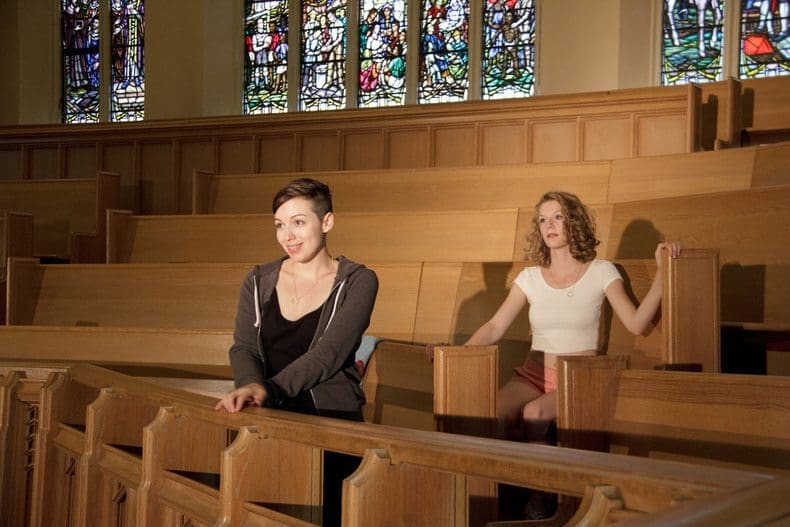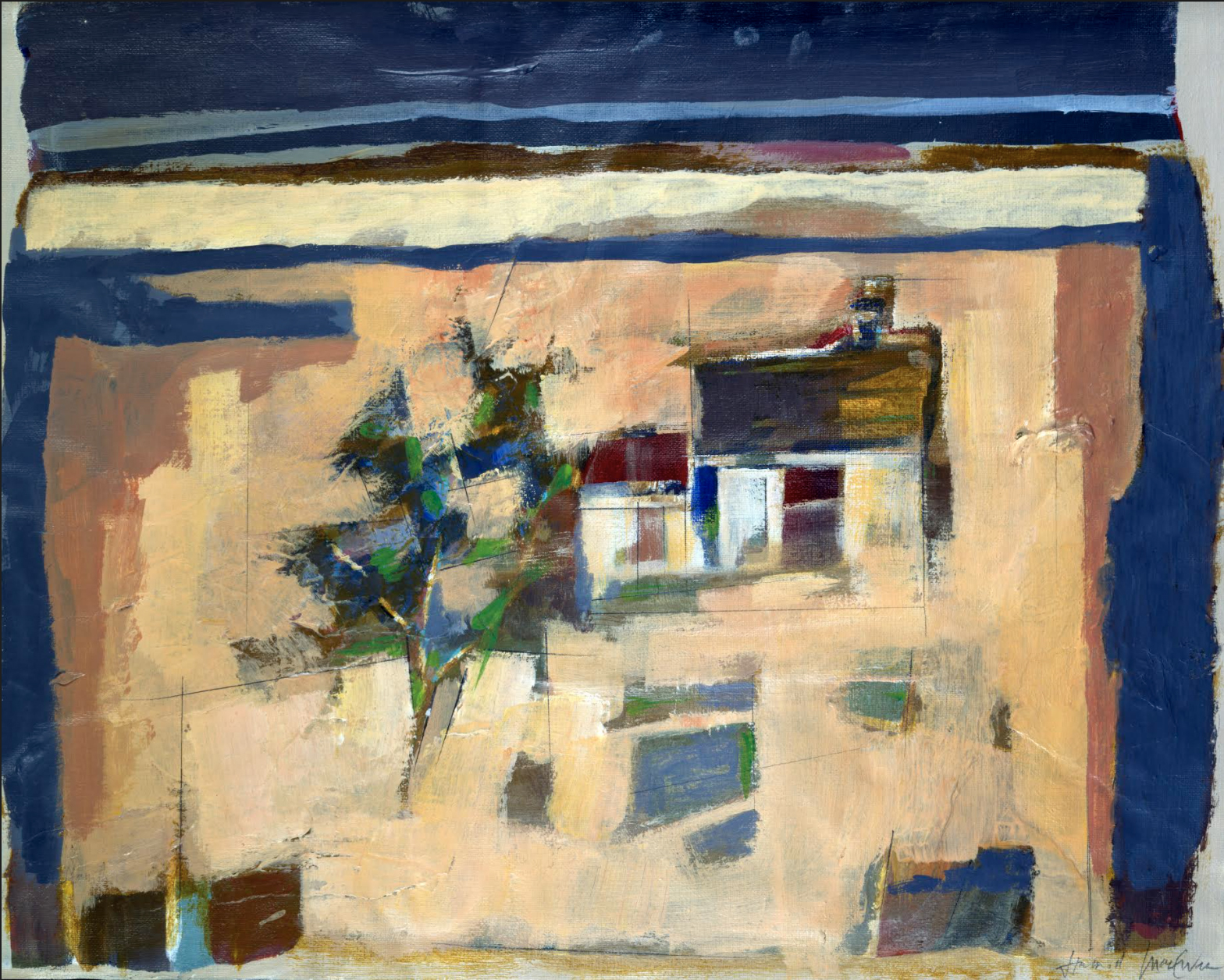It isn’t easy to put a truly fresh and modern take on one of the world’s most well known love stories, but Headstrong Collective, in association with Urban Bard, has managed to do just that. After speaking with the production team while the show was in rehearsals, we were excited to see what would come of their vision — and they did not disappoint! Romeo and (her) Juliet is a queer take on Shakespeare’s famous play set in modern-day Toronto. In this production, traditional gender roles are shaken up, a multitude of selfies are taken, and the role society can play in its own growth or demise is ultimately questioned.
In today’s world, it’s easy to see theatre much as you would a film — sitting in the dark, having a pretty, dramatic, sad, or happy story unfold in the lights before you while you remain relatively unengaged and ultimately unchanged by the end of the performance. But this site-specific production, directed by Scott Emerson Moyle and produced by Melanie Hrymak and Leslie McBay, will make sure that isn’t the case!
Rather than your usual theatrical setting, the piece takes place in a church, which is set up as the memorials of Tybalt and Mercutio, where Friar Laurence is about to address the people gathered and tell the tragic story of what brought them to this point. Right from the moment you step in, you are invited to sign the guest books of the characters who have passed and look at their photographs. When it comes time to enter the sanctuary itself, you’ll find several of the play’s characters sitting there already, saying their prayers and dealing with the repercussions of all that has happened. These little hints towards the story that is about to unfold, along with seeing the characters thinking about this pivotal moment of their lives, puts a certain buzz in the air. We could barely wait for the first line!
As the program states,
“Have a seat in the pews, but don’t count on staying still for long; the action takes place all over the sanctuary.”
It’s important to read this and to truly take it in. As good little theatregoers, we were a little hesitant about moving around the space to get a better view. But there’s no need to be — because moving around and getting in on the action are completely encouraged. The piece makes use of the entire space. Actors roam up and down every aisle, stand atop the balcony, crawl over the pews, speak from the pulpit, and travel just about everywhere in between. If you can’t hear what’s going on between two characters in the corner, find a seat closer to the action!
The church is fully accessible, but if you have limited mobility, you might want to select a seat close to the centre aisle, in the middle or middle-front of the church. Although moments happen all over the church, some very important scenes occur on the balcony and sitting towards the front will help ensure you don’t miss out. But if mobility isn’t a concern, grab a seat anywhere and don’t be afraid to change it as you see fit!
Tech in this show is virtually non-existent, as all the lights within the sanctuary are kept on and the only sound effects are those made by the actors themselves. We loved how this focused us in on the actors’ performances and the story being told and allowed us to place our focus wherever we wanted. But it doesn’t hurt to keep this in mind if you’ve never seen a site-specific performance before. It’s certainly a different kind of theatrical experience — but one you have every likelihood of enjoying if you stay open to it.
So, no sound effects, but that doesn’t mean no sound! Composer Stephen Joffe does a lovely job of incorporating music in a subtle, natural way. Organ music is effectively used on a couple of occasions, but the standout musicality is the song sung by Juliet at the Capulets’ ball. The lyrics and tune are not only lovely in themselves, but they also help to make sense of how Juliet catches Romeo’s eye and why the former has such a profound and immediate effect on the latter.
The show has been expertly trimmed down to a convenient 90 minutes with no intermission. Unnecessary characters such as Romeo’s mother, Lady Montague (who barely speaks and whose death is vaguely mentioned), and Romeo’s servant, Balthasar (who is only truly used near the very end of the original text) have been removed — their lines cut when not important or given to other characters. This strategy eliminates the extraneous scenes, allowing you to really focus in on the characters and plots present. This approach turns what could be a tiresome two-to-three-hour show into a quick, highly focused production.
Because the show is set in modern-day Toronto, little tweaks are cleverly speckled throughout. From the super quick “140 characters or less”-type character descriptions in the program to Benvolio’s constant desire to take selfies, both the production team and the cast managed to find all kinds of ways to make the characters seem current and relatable. When you see Lady Capulet walking by with her yoga mat, Tybalt fully attired for a squash game, or Mercutio fixing up his bike, you will feel practically transported to different areas of Toronto where you’ve seen these exact personalities.
One of the biggest and most exciting changes the play tackles is switching up the genders of many of the roles. Not only is Romeo played by a woman, but so too are Friar Laurence and Tybalt, while the traditionally female Nurse role is taken on by a man and Benvolio seems to fall somewhere in between the two traditional gender role concepts. The gender of the actor playing the role may have changed, but the Friar is still a strong force in the community and the Nurse is still motherly and compassionate — proving gender stereotypes or rigid casting based on gender don’t have to be present in Shakespearean productions today. The fact that many of the roles are played by a different gender than Shakespeare suggests goes virtually unnoticed because in today’s world, a man can be the kind and loving caretaker to a young girl just as much as a woman can be a powerful leader or a fierce combatant.
Both Romeo (Leslie McBay) and Juliet (Krystina Bojanowski) have beautiful and sometimes gut-wrenching emotional moments individually as well as a captivating connection together. Clare Blackwood and Max Tepper’s Benvolio and Mercutio are constant sources of comedic relief and offer an excellent contrast to Melanie Hrymak’s fierce and fiery Tybalt. Geoffrey Whynot’s kindly but impetuous Capulet and Siobhan Richardson’s desperate-to-appease Lady Capulet expertly transition from doting, easy-going parents to exhausted heads of a household that’s slowly crumbling around them. Lisa Karen Cox seems in her element as the caring but tough Friar Laurence, Adrian Shepherd offers a wonderful, awkward, and humorous twist on Paris, and Shawn Ahmed superbly masters his contrasting roles of commanding Prince and comedic Nurse. Between the performers’ strong mastery of Shakespearean text and Moyle’s creative and invigorating direction, the whole performance comes together seamlessly.
From big choices such as the trimming of the play and shaking up the traditional casting to little clever tweaks all along the way, director Scott Emerson Moyle, producers Melanie Hrymak and Leslie McBay, and the entire cast and crew of Romeo and (her) Juliet have made an over-400-year-old-play fresh, thought-provoking, and relevant to today’s Torontonian audience. The production runs through to September 20th at Bloor Street United Church. You can purchase tickets online or at the door.
Photos by: Nathan Kelly
SDSK



